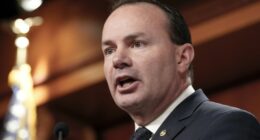
Florida law requires local governments to advertise what it calls “Truth in Millage” budgets before they are approved, outlining how taxpayers are taxed and where their money goes. Truth is a relative term, even for state law.
As Flagler County School Board member Colleen Conklin studied the budget the board is approving in a pair of meetings this month, she noticed a gaping absence: $10 million the district receives from the state only for the money to be redistributed to families as vouchers or payments, footing the bill for private schools and home schooling.
That surging amount of money comes out of what would otherwise have been appropriated to the district. It explains in part why the district’s enrollment is not increasing, and why the dollars the district has for its own uses have been relatively stagnant. (See: “Flagler Schools’ Budget Is Millions Short from 10 Years Ago as District Is Forced to Shift Tax Dollars to Private Schools.”)
What’s not explained is why the district and its finance department have not detailed those figures to the public–or even to the School Board.
“If we’re advertising our budget to the community and the public, I find it odd that that $10 million dollars is not transparent, and at least a line item in the budget,” Conklin said.
All students are eligible for so-called Family Empowerment Scholarships, to spend on private school, parochial school or home-school education. Paul Renner, the Palm Coast Republican and Speaker of the House, last year championed the bill that expanded the program to universal eligibility, after it had been restricted and capped. The bill also made home schooling eligible for the public dollars. The average award for a single student taking public money for private ends last year was $7,950, according to the Department of Education. Parents could also have up to $750 per student to use for transportation. The program was expected to encourage an exodus from traditional public schools. The numbers support the expectation, at least when they are not masked by district budgets.
The Flagler County school district, according to Conklin, gets $10 million for that (the figure isn’t precise because to this day the district has not revealed it). Patty Wormeck, who heads the district’s finance department, said the money is incorporated in the budget, though she didn’t sound sure.

“Where is that expense shown in the budget?” Conklin asked during last week’s budget meeting, the first of two. The second is scheduled for Tuesday.
“I believe it’s all wrapped up in the instructional piece. But I think maybe what we can do is put a footnote, if that would suffice,” Wormeck said.
Wormeck’s reference to one of the most impactful elements of the budget as a “footnote” was surprising, if also indicative of the district’s inexplicable indifference to the program’s impact.
Conklin noted that the budget presentation had an entire separate page devoted to a $95,000 scholarship fund, out of which the board awards a single $500 scholarship per year. But it has no such page for the $10 million the district is losing to private-school and homeschool enrollment–not even on the district’s internal document that was distributed to board members, and made available to the public.
“Can we have a separate page that shows the dollars in and dollars out? Because if not, it’s not transparent to the community,” Conklin said. “It looks like we’re $10 million richer than we are, and we’re not. I don’t know how everybody else feels about it. But to me, when we’re advertising for transparency, that should be transparent.”
Wormeck said that can be done in an internal document. It cannot be done on the state’s document as officially presented for advertisement–the so-called Truth in Millage document. “On this first document here, we can make it transparent,” Wormeck said of the internal document. “On the second agenda item, we cannot.”
“It just doesn’t make sense to me that it’s such a large amount of money, that it’s not transparent,” Conklin said. “It’s not clear to the public. It’s their tax dollars. So I don’t understand why they haven’t updated the documents yet.” She added: “How are we supposed to advertise and being transparent with our budget if we’re not telling the community where that 10 million is going?”
But other districts do make that clear, as even the board’s own attorney told board members. “What I typically see is that districts will take it upon themselves, not necessarily in the advertised format that’s imposed on us by Tallahassee, but to round out that information with PowerPoints and and slides from the district level to help tell the story a little more accurately,” the board attorney said. He must have been familiar with neighboring districts’ budget books and procedures, which differ sharply from Flagler’s duskier approach.
When the finance department of the Volusia County school district presents this years budget, it does so with a 134-page document made available for public inspection, as opposed to Flagler’s abbreviated, half-dozen pages of numbers without a single explanation. Volusia details the $11.6 million supplement for vouchers the county is getting on top of its regular allocation, a $3.3 million increase over last year, it details the total amount of dollars going to the private scholarships ($58.5 million), and it details the actual number of students in that category (6,800), none of which Flagler has ever done, denying the public and school board members a true picture of the district’s finances or the measure of an explanation as to why the district’s enrollment continues to be flat for the 17th straight year.
The Volusia documents show, for example, in the budget book and a powerpoint for board members less inclined to study budgets, that the district expects a surge of more than 2,000 students participating in the voucher program compared to the last school year–and a decline of over 600 students going to traditional and charter schools, when the figures are weighted.
Volusia isn’t an exception. St. Johns County schools’ 51-page budget document also line-items the surge in dollars going to Family Empowerment Scholarships (from $25.5 million to $42.7 million), provides explanations about the scholarships’ impact on the budget, and differentiates its numbers when scholarship students are not included.
It’s not clear why the school district’s finance department chooses not to be so transparent–unless asked by a School Board member. Conklin is leaving her school board seat in November after 24 years as a board member. The two senior members of the board by then, Will Furry and Christy Chong, will have each served two years. They are ardent supporters of “choice,” including the siphoning of public money to private schooling, so they would not be inclined to raise alarms about invisible funds in the budget. They have shown little interest in studying the budget beyond the basic information provided by Wormeck, except when micromanaging easily graspable items they happen to oppose, and have little bearing on the district’s core operations. Furry thought it a “reasonable request” to include voucher dollars in the distributed budget.
Wormeck promised for Tuesday’s meeting a powerpoint that would include the relevant numbers. As of Monday afternoon, neither that nor other documents had been made available to the public on the district’s “Board Docs” where agendas and supporting materials are posted.
On a somewhat more transparent note, the district ended the last year with a reserve of $7.4 million, but will start the new fiscal year with $2 million more, at $9.5 million thanks to Covid-era aid, technically called Elementary and Secondary School Emergency Relief, or ESSER. “We took ESSER funds and were able to be creative and utilize them to backfill different positions that were required post-pandemic,” Wormeck said. “That helps out tremendously with getting our fund balance up.” Wormeck called it “phenomenal” that the district had to use just $200,000 of its reserves to balance the budget. “That’s kind of the best result we’ve had in quite a long time.” Of course, Wormeck did not mention the origin of the money–the Biden administration–to a board with a couple of members who could have myocardial infarctions if they were to acknowledge it.
The district has $5.3 million left in such federal aid. A caution: “2024-25 is going to be a very crucial year in maintaining that fund balance,” Wormeck said. “We have been able to use ESSER grant funds to help that fund balance throughout the past couple years. With those dollars going away as of September, it really comes down to just the general fund at this point.” In other words, the board without that federal aid is on its own.










